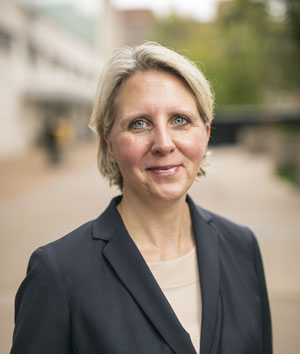A health care system model that offered tobacco cessation treatment to smokers being discharged from a hospital produced a higher rate of tobacco abstinence during the three-month program than referral to a state-based telephone quitline, but the advantage disappeared at six months when both treatments produced comparable quit rates, researchers have found.
In a study in JAMA Internal Medicine, the researchers suggested that extension beyond three months of the health system approach, which includes cessation medication and telephone-based behavioral support, could potentially keep individuals tobacco-free.

“Our findings prompt the question of whether continuing smoking cessation past three months – the standard duration of treatment – would sustain the superior results of the health care system model,” said the study’s senior author, Hilary Tindle, MD, MPH, the William Anderson Spickard, Jr., MD, Professor of Medicine and associate professor of Medicine. “It’s possible that more counseling or medication, or both, could generate more engagement with the program and thus better results over time.”
Tindle, the founding director of the Vanderbilt Center for Tobacco Addiction and Lifestyle, and her team worked with other researchers from Massachusetts General Hospital (MGH) and University of Pittsburgh Medical Center. Researchers from the three institutions conducted a study of 1,409 adults who smoked daily and who received brief in-hospital tobacco treatment to determine the most effective post-discharge model for cessation. Over 500 Vanderbilt University Medical Center patients took part in the study.
Participants were randomized to one of two models, each offering tobacco cessation medication and counseling by telephone for up to three months. One model used the national system of state-based telephone quitlines, which provides cessation counseling and free samples of nicotine patches, gum or lozenges. The medical center model provided patients at hospital discharge with medications that have been proven to be effective for smoking cessation and continued counseling with a series of automated phone calls, with the option to speak with a tobacco coach.
The multi-state study found that three months after discharge, more participants in the health care system model were tobacco-free for at least seven days (which was biochemically verified), compared to the quitline model. But at six months – three months after health care system intervention ended – the difference in smoking abstinence rates between the two models had narrowed and was not statistically significant.
“Hospital admission is a great opportunity for smokers to begin tobacco cessation treatment,” said lead author Nancy Rigotti, MD, professor of Medicine at Harvard Medical School and director of the MGH Tobacco Research and Treatment Center. “That treatment is only effective, however, if it continues after discharge, and how to best meet that ongoing need is the question our study was designed to address.”
Cigarette smoking is responsible for around 480,000 deaths annually, the leading cause of preventable deaths in the United States. In 2020 an estimated 13% of adults smoked regularly, and more than 3.2 million of them were admitted to a hospital.
Esa Davis, MD, MPH, a study co-author and director of the University of Pittsburgh Medical Center Tobacco Treatment Service, called for research to devise models for longer follow-up care by health care systems.
“We found that keeping smoking cessation within the health care system where it could be managed like other chronic medical conditions could be an effective form of treatment,” said Davis, associate professor of Medicine at University of Pittsburgh Medical Center. “This approach presents a challenge for health care systems, however, which future research needs to address.”
The study was funded by the National Heart, Lung, and Blood Institute.












